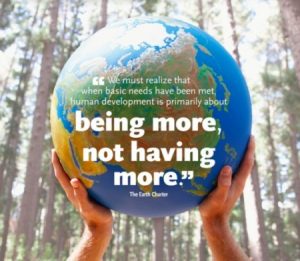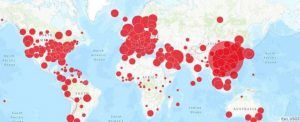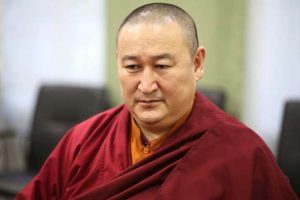
In 1994, soon after the collapse of the Apartheid state, my husband Kittisaro and I were invited to lead a series of Buddhist retreats in Botswana and South Africa. We had just left monastic training in the Thai Forest Tradition of Ajahn Chah, where I had lived for 12 years and Kittisaro for 15 years as monastics. Nothing had prepared us for the sweeping landscapes of Southern Africa, with its vast expanses of golden grasses and squat bush trees of the undulating savannah. Most captivating, though, was the magnificence of the game reserves, where herds of elephant, buffalo, impala, flamingos, hippos, giraffes, the mighty lion, and a myriad of other large and small creatures roam, as they have for millions of years. It is thrilling, for example, to witness a massive rhino for the first time, content in its mud bath, its great horn raised heavenward.
Since then, we have been deeply involved with South Africa’s journey through the pernicious legacy of racism and the impact of a devastating AIDS pandemic. We launched and guided a Buddhist non-profit organization, built the Dharmagiri Insight Meditation Centre, initiated local welfare projects, and raised funds to secure a home for vulnerable children that is run by Sister Abegail Ntleko, author of the memoir Empty Hands and winner of the Unsung Hero Award presented by the Dalai Lama in 2009.
Helping to seed the Dharma in such an environment has been highly challenging, but one way we restore ourselves is by spending time at our local game reserve. Over the years, I have noticed that being in the presence of wildlife in its natural environment has the effect of regulating the nervous system, bringing body and mind into a restful parasympathetic state (rest and digest), and out of a stress-activated sympathetic state (flight, fight, or freeze.) For the most part, modern life keeps us in a heightened stress state, in which increasingly we never experience a deeper relaxed state. The loss of wilderness is the hidden cost of our unsustainable lifestyles. It also means we rarely feel the natural, integrated state of being that is possible when in contact with the ancient rhythms of nature.

Each year, we host Dharma practitioners on month-long retreats and the safari tours, which enable first-hand encounters with Africa’s wildlife in its natural habitat. On one tour, we drove to the Black Mfolozi River Valley with a small group. There, we walked mindfully from our vehicle to huddle behind a clump of bushes, from where we were able to observe six rhino in the dawn mist surrounded by a flock of delicate marshland birds, the white sacred ibis. While a truly transcendent and ageless scene, I felt a great poignancy as the rhino, sensing our presence, turned their mighty heads to shield their horns.
In the last decade, Africa has experienced the devastating and tragic decimation of its unique and resplendent wildlife through poaching that supplies growing demand for illegal wildlife parts and products. Due to this insatiable and destructive industry, wildlife trafficking has grown into a highly militarized mafia, dwarfing the teams of park rangers and overwhelming conservation efforts. While many major species are being decimated, the most endangered are rhino, elephant, and the Asian tiger. Kingpins, mostly from Asia, run this brutal trade in cahoots with vast networks of local and regional syndicates that bribe police and government officials, and indenture people, while generating a vastly corrupting influence that is changing the fabric of rural society in the region. It has also created a global wildlife crisis that is annihilating the noble lion, kingly elephant, magical tiger, mighty rhino, and numerous other rare species.
In the fight for preservation, it is important to educate oneself about the difference between true and false conservation. For example, the hunting industry has close ties with the National Rifle Association (NRA), one of the most powerful lobby groups in the United States that also promotes hunting safaris. I have been on many flights from Johannesburg direct to the US that are filled with NRA members in khaki bush gear, bragging about their kills. On one flight, I counted more than 30 adults, some with their children, lining up at a door in the Atlanta airport baggage claim to collect their rifles. These so-called brave feats are actually enabled by a canned hunting industry that undermines true wildlife conservation.
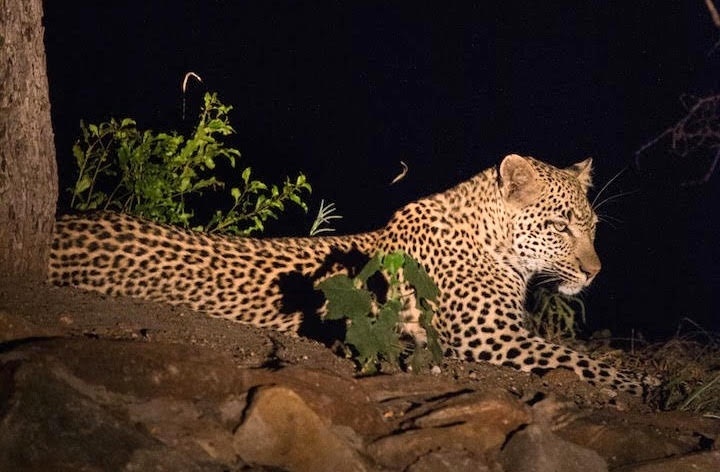
If you see lions in the wild, you experience the privilege of drawing near to their majesty and power. But to see them caged in small enclosures so they can be exploited for financial gain is a travesty. Lions are hand reared so that tourists can pet them as cubs, which is actually detrimental to their health. Well-meaning visitors are led to believe that cubs are being saved in such sanctuaries, but this is untrue. As they grow, they are hand fed by humans. One day, they will be called to a vehicle and trustingly they will go, but there, some tourist from Europe or America will set their gun sights and shoot, often injuring them first. For this supposed privilege, the “hunter” will pay thousands of dollars. Why? Is it so that the person can post pictures on Facebook of themselves on top of a sprawled lion carcass, or with a dead leopard draped around their neck?
As Dharma practitioners, the first precept, “I undertake the training to refrain from intentionally taking life,” means we protect life. Yes, it is true, in the name of conservation, animals need to be culled, but if a Zulu ranger has cause to shoot a lion—say in the event of it escaping into a populated area—he will drop to his knees to beg the lion’s forgiveness. He will honor the lion knowing that he has undertaken a grave act. This awareness is a million miles from the gleeful “big game” photos on social media that betray such a paucity of compassion.
The core issue here is that in our era of anthropogenic climate change, not only are we producing the conditions for extreme weather events and countless adverse side effects, we have initiated the sixth great extinction. The fate of countless species and the billions of animals reared and slaughtered for human consumption each week goes to the heart of our apocalyptic times. We simply fail to recognize that the earth and her species have the right to live outside our domain. We assume that all animals exist to serve, entertain, feed, and clothe us, and in the process we deny their evolutionary journey, social structures, feelings, needs, even their skin, flesh, blood, bile, and bones. Seeing beyond our human-centric perspective means understanding that we do not have the right to destroy sentient life.
We can avert this destruction by educating ourselves about the plight of wildlife and the numerous erroneous myths surrounding animal parts. We should not buy or use products derived from rhino horn, elephant tusk, lion and tiger bones, bear bile, and the like. Nor should we buy trinkets, fashion accessories, or other articles that include crocodile, alligator, python and other animal skins, fur, or bone. We should also avoid products that contribute to the decimation of wildlife habitats, for example palm oil (orangutans) and soya-fed meat (the Amazon).
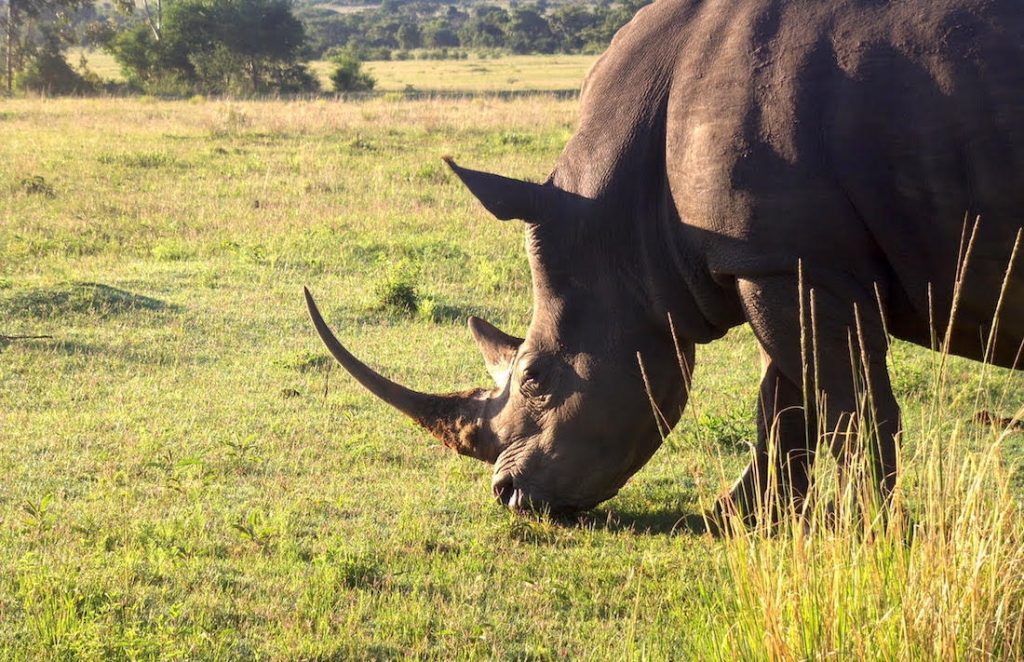
The good news is that more people are beginning to wake up to this unfolding tragedy. Pressure is building on governments to halt the trade in wildlife, and conservationists increasingly include rural communities in economic programs as a key aspect of preservation. In 2015, after the much-publicized killing of Cecil the Lion by US national Walter Palmer, Botswana banned hunting, which sent an important message. But this is not enough if the huge markets in Asia do not respond by outlawing the sale of wildlife parts, while following through by enforcing stiffer penalties, such as the one given to Thai national Chumlong Lemtongthai in 2012 in South Africa who was sentenced to 40 years in prison for masterminding a devastating poaching ring.
Ultimately, the political, economic, and social ills of our times are, in great part, the result of a colonial mindset that sees the world through the lens of acquisition. Buddhist practices have the potential to shift the view that objectifies and projects dominion over everything to the insight of Zen master Dogen: “Enlightenment is the intimacy of all things.” If we translate this wisdom into systemic change, it will go a long way to creating a sustainable world for our future. I truly hope that this future is one that allows us to share this beautiful Earth with our fast-diminishing wildlife.
Thanissara, originally from London, is an international Buddhist teacher and has an MA in Mindfulness-based Psychotherapy. She has practiced the Kuan Yin Dharmas as taught by Master Hsuan Hua since 1982. Kittisaro and Thanissara teach a synthesis of Theravada and Mahayana, and together they have co-authored Listening To The Heart, A Contemplative Journey to Engaged Buddhism. Thanissara’s most recent book is Time To Stand Up, An Engaged Buddhist Manifesto for Our Earth. She is a core teacher at the Insight Meditation Society in Massachusetts, and an affiliated teacher at the Spirit Rock Center in California.
Back to Planetary Healing: Buddhism and World Ecology Special Issue 2017
See more



